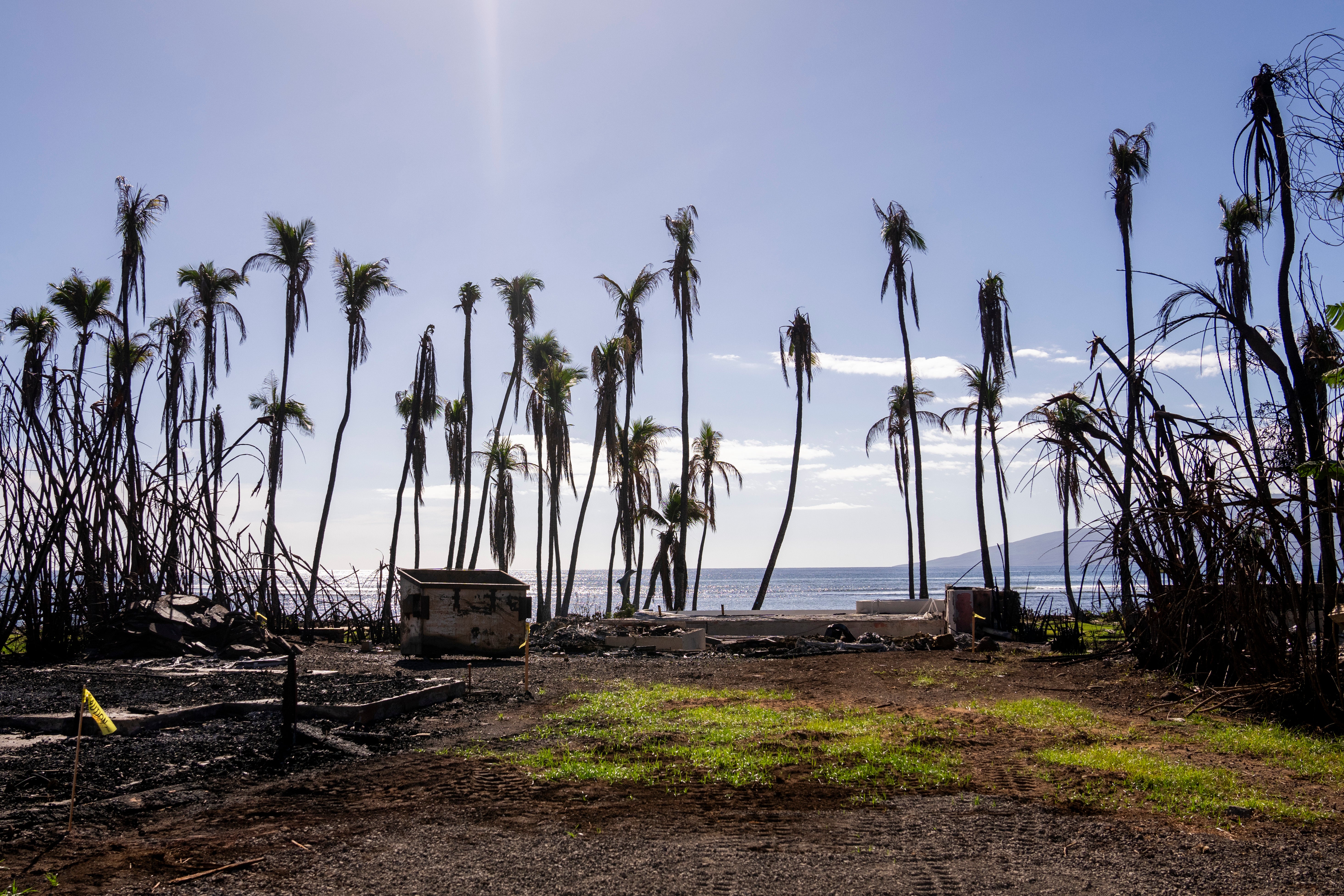Over 6,000 Hawaiians still homeless five months after Maui wildfires
Maui officials are hoping to convince property owners to offer leases to residents
Your support helps us to tell the story
From reproductive rights to climate change to Big Tech, The Independent is on the ground when the story is developing. Whether it's investigating the financials of Elon Musk's pro-Trump PAC or producing our latest documentary, 'The A Word', which shines a light on the American women fighting for reproductive rights, we know how important it is to parse out the facts from the messaging.
At such a critical moment in US history, we need reporters on the ground. Your donation allows us to keep sending journalists to speak to both sides of the story.
The Independent is trusted by Americans across the entire political spectrum. And unlike many other quality news outlets, we choose not to lock Americans out of our reporting and analysis with paywalls. We believe quality journalism should be available to everyone, paid for by those who can afford it.
Your support makes all the difference.More than 6,000 people are still without permanent long-term shelter almost five months on from the devastating 8 August wildfires that tore through the Hawaiian island of Maui.
The American Red Cross is currently housing displaced residents in empty rooms in hotels and condos, and expects residents to find a longer-term solution by March.
“A lot of people I know, Lahaina is home,” Keao Shaw, who owns a charter boat business on the island, told The Wall Street Journal. “They want to come back to West Maui as fast as possible but there’s nothing to rent.”
Others described the pain of watching tourists return to the island, even as locals struggled to find housing.
“Sometimes, I don’t even leave my room,” lūʻau performer Welo Noury told the paper.
The island was already struggling with a housing crisis before the fires raced across the historic town of Lahaina.
The town was almost completely destroyed and at least 100 people were killed in the tragedy.
In 2022, Hawaii had the highest cost of living of any state, and housing prices jumped 35 per cent between 2019 and 2022, according to The New York Times.
The August fires then destroyed more than 2,000 buildings, and large portions of Lahaina are still off-limits to visitors as they remain filled with toxic debris.
Some residents have taken to camping on the popular Ka’anapali Beach in protest over their continued struggles to access stable housing after the fire.

In the face of these challenges, Maui officials are considering giving property owners tax breaks if they convert some of the island’s numerous vacation and second homes into long-term rentals.
But, emergency housing efforts have faced opposition in some quarters.
One Maui homeowners’ association is suing a resident for attempting to house wildfire evacuees in tiny homes on his property.
Meanwhile, hundreds of wildfire-related lawsuits are working their way through the Maui court system, in what’s become the largest mass tort litigation in Hawaii history – threatening to overwhelm the local system.
“I can’t think of anything else that comes close in scope,” attorney Ilana Waxman told the Honolulu Star-Advertiser.

Join our commenting forum
Join thought-provoking conversations, follow other Independent readers and see their replies
Comments